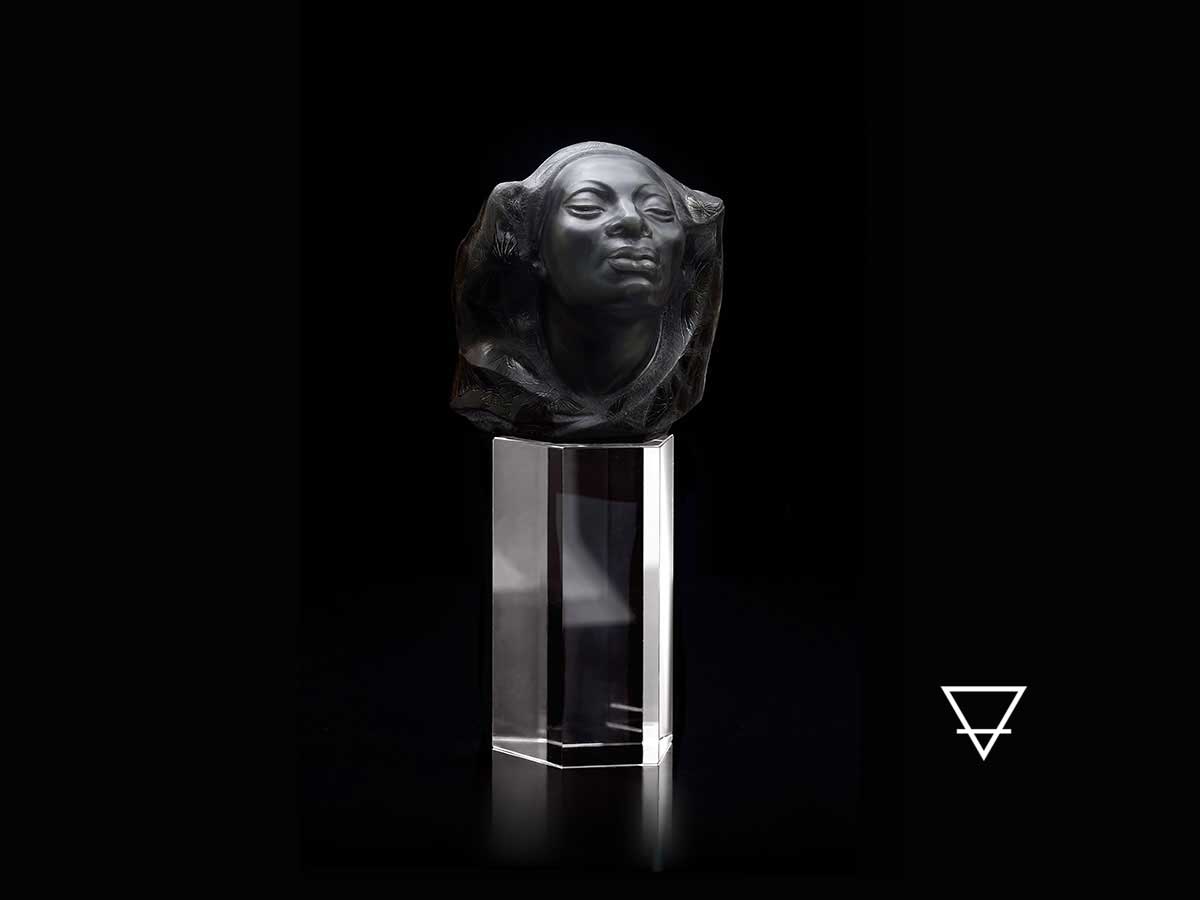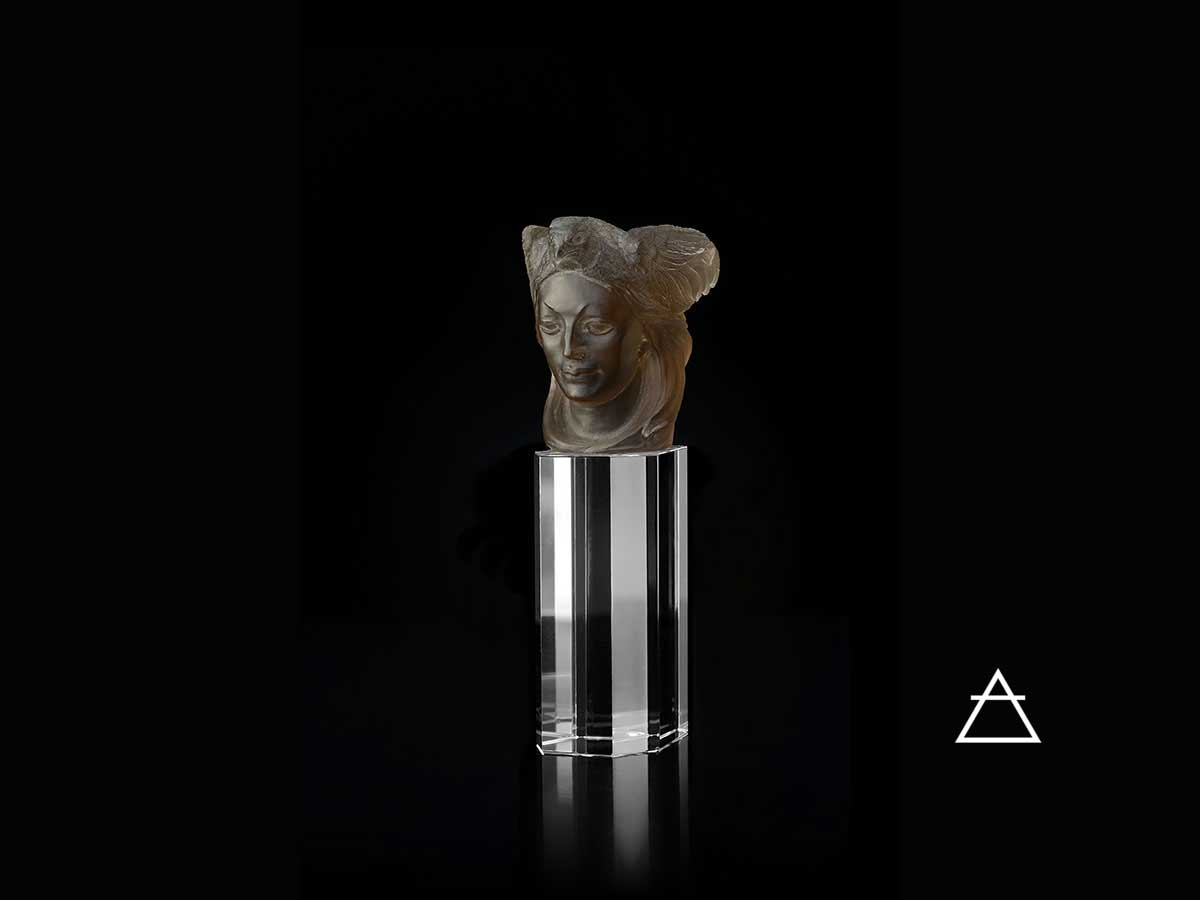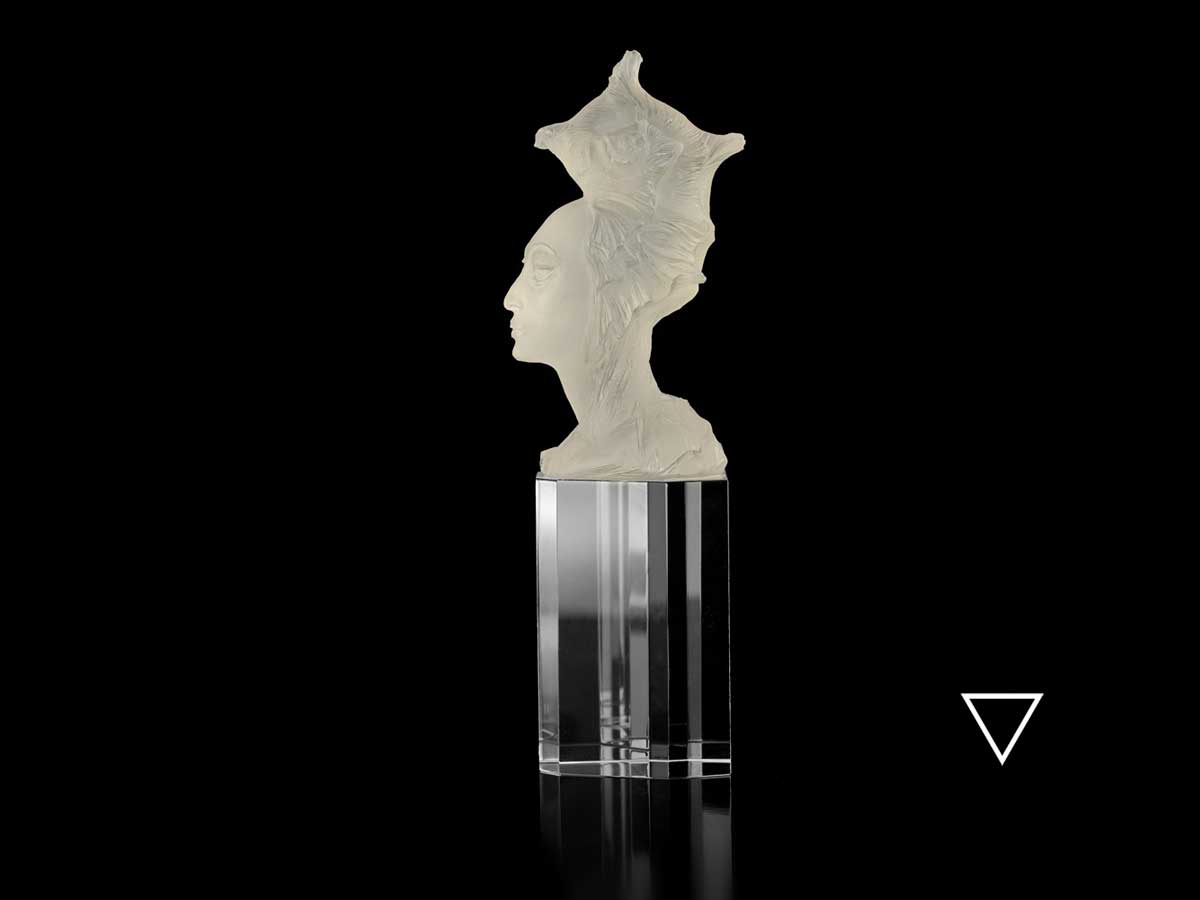ART
Composition " Union of Four Elements"
The composition “Union of Four Elements” is the Author’s philosophical reflection on the structure of the Cosmos, on the harmony of the Universe, embodied in symbolic images of women carved from stone in the form of miniature busts mounted on crystallic prisms made of rock crystal.
Each image of a woman symbolises a certain time of the year, part of the world, time of the day, an alchemical element, both referring us to the Eastern views on the Universe, and engendering allusions with ancient, European art, mythology of different peoples, where allegories to any abstract concepts were often given human form particularly in female images.
To accomplish this arduous task, the artists chose four different ethnic types of a female face, and each image epitomised certain cosmogonic elements. At the same time, each image in this composition has its own emotional state, its own aura and magic - enchanting and mesmerising.
For instance the head of the Virgin with a headdress in the form of a bird of prey that is magnificently carved from translucent smoky quartz symbolizes Air, Evening, West, Autumn and becomes an expressive sculptural metaphor for omnipresent abstractions. This work refers us to the cultural horizons of the past, begets chains of subtle associations that evoke a keen emotional response deep inside.
The female head, delicately carved from rock crystal, whose image is crowned with a shell helmet, symbolizes Water. It marks the first motion in nature after a long winter, which brings a sense of spring, remaining the white light of Morning in the eternal flow of time.
The spiritualised head of the Nubian, that symbolises Night, Earth, Winter, North, is gorgeously carved from black rainbow obsidian. Her eyes are closed, she is immersed in self-contemplation or reflection - the Night always bodes for it. The work skilfully uses the contrast effect of matte dark obsidian in the face of the maid and splashes of greenish polished stone in the image of carved hawk moths scattered around the head cloth. The style of this work demonstrates the influence of Art Deco, which flourished in the 1920s, and today is again relevant and in demand.
The same expressiveness can be seen in the head of a woman with Slavic features, carved from yellowish lemon citrine, beloved stone of modernism. Her head cloth is wreathed with delicately intertwined leaves and resilient flower stems, incarnating Summer, Noon, Fire, this is what symbolists of the Art Nouveau era were so affectionate towards.
Refined faceted pedestal made of rock crystal seem to lift, transfer the images from the earthly world to the heavenly world, while giving the whole composition a sculptural and metaphoric integrity. Artfully used decorative effects of coloured and transparent stone, contrast of matte and polished surfaces, and finely designed sculptural ornaments create compositions that are both metaphorically complex and subtle in mood and their emotional state. These compositions have materialised the depth and earnestness of the artist’s creative thoughts. All this allows us to attribute this composition to the works of the museum level.
The author of the project is Olga Mironova.
Stonecarvers are Alexander Levental and Olga Poptsova.
Galina Gabriel, Ph.D. in History of Arts, member of the Union of Artists, member of the International Association of Art Critics





